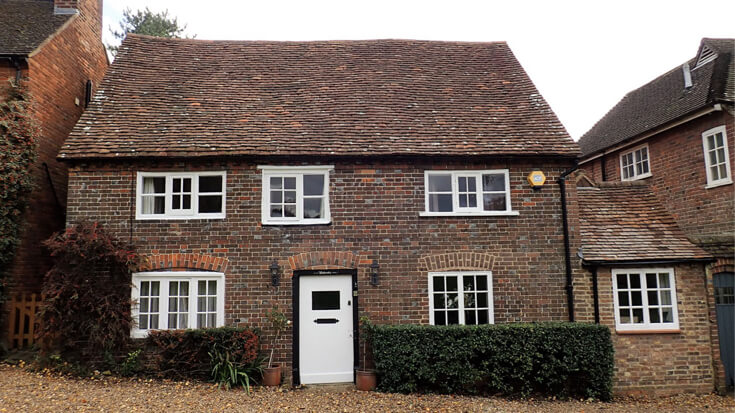Is it time to declutter your home?
Are toys and schoolbags taking over your home? Do you trip over shoes in your hallway? Is your kitchen table one big dumping ground for post and general junk? Then it’s time to declutter.
Take an inventory
Write a list of everything that’s cluttering your space – whether that’s stuff in kitchen drawers, toys scattered across the living room, or paperwork on your kitchen worktop. One approach is to take a visual inventory by spreading everything out on the floor and really looking at what you own.
Seeing what you have will help you find proper homes for some items and make it easier to get rid of others.
Find alternative locations
Many of the items we store in our homes end up in one place and stay there, but sometimes there are better places to keep them. So, rethink what to keep and where to keep it.
For example, cupboards under stairs are often full of stuff that could be stored in a garage or shed, leaving the space free for everyday items such as shoes, dog leads and shopping bags. Ask yourself: Is a kitchen drawer the best place for a bag of dead batteries, and is the kitchen table really the right location for post? Probably not.
Try the three-basket technique
This is a classic method for sorting through your stuff. Get three containers and assign each a different purpose: one for rubbish; one for items that could go to charity or be sold; and one for things you will keep. With these categories in mind, it’s much easier to scrutinise your possessions and decide their future.
Remember – learn to let go
It’s very easy to assign sentimental value to things that simply don’t deserve it.
Remember, getting rid of useless or used items, such as books, your old schoolwork or unwanted presents (poodle-shaped ice trays; tea-light holders made from tin cans; holiday souvenirs), doesn’t destroy your memories of them.
Be brave and go with your instincts. If you let yourself ponder for too long about whether to keep or discard something, you'll waste time and lose sight of your decluttering objective. Keep your eyes on the goal!
Do the beautiful or useful test
As you begin to sort through your items, keep these two criteria in mind.
- If a piece is beautiful, display it.
- If it’s useful – and that means you’ve used it in the past year – keep it, but find a good place to store it.
Some stuff won’t need this kind of scrutiny. These no-brainer get-rid-now items include old newspapers and magazines (messy and a fire hazard), games or puzzles with missing pieces, books you have no desire to re-read and outmoded technology such as cassettes and videos, which can be binned (or donated to charity) easily.
If you really must hold on to any of these things, pick the best examples and display them creatively.
Create alternative storage
See if any items around you could be hung up on rails, tucked into jars or baskets, stored on open shelves, or converted into simple storage.
Old jam jars can hold stationery items. Freezer bags can keep loose change, batteries or matches tidy. A humble card folder can impose order on a cluster of takeaway menus or a batch of school letters.
You don’t need to spend a fortune to cut out the clutter.
Make storage easy for all the family
If you want to encourage young children to put their toys away, label baskets and tubs with images of the toys that live in them. Why not mount a photo of each family member above a peg, so they can hang their coats and school bags in the right place? You could also fit a rack to the wall for mail and paperwork.
Consider accessibility
Create easy-to-access storage for items in constant use, such as school lunchboxes, coats and bike helmets. Pegs should be low enough for children to reach, while baskets and tubs that can be stored under sofas or beds make clearing up easy.
For items that are only needed occasionally but are considered unsuitable for the oblivion of the loft, make use of wall space (the single biggest surface in your home) and put up shelves that can hold box folders and baskets.
Exploit underused spaces, too – the wall space above a door, for example, can become home to a rack or shelf. Keep a waste bin or small box by the front door for recycling, so you can bin junk mail and menus the second they enter your home.
The closet challenge
If you get close to throwing an item away and then think ‘but I might wear that’, even though you haven’t in over a year, then why not give the closet challenge a go?
First, hang all your clothes with the hangers in the reverse direction. After you wear an item, return it to the closet with the hanger facing the correct direction. Within six months, you’ll have a clear picture of which clothes you can easily discard.
This experiment could also be applied to a number of clutter areas in your home (toys, linens, hobbies and craft items).
Make a definitive list of the new storage locations
It’s all too easy, in a fit of tidying, to squirrel stuff away and then forget where you’ve put it. To make sure you don’t lose anything, why not create a master list detailing the new locations for all your items?
Stick with it and in no time at all, you’ll have an organised and decluttered home.




